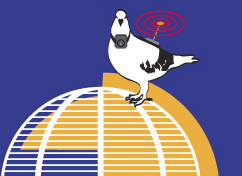audiovisual collages, interactive, interphonetic and multicultural textualites, urban calligramme, participatory web, discovery, exploration, multiplicity, diversity, urban screen. The project is a continuation of my doctoral research in Visual and Digital Poetics, with an interest in the new and still unexplored genre of e-poetry and how it is integrated in the realm of social and urban poetics. It is an interactive piece formed by pallets with audio, animated and visual elements of the multicultural city of Melbourne. The user can create phonetic and textual-visual compositions. The ultimate aim is to make this work accessible via the web to enable users to recreate these fragmented realities and send them back to the city, to a common urban screen.
Abstract The multicultural characteristic of Melbourne prompted me to inquire into the calligram of natural language sounds, the visual/textual signs from many different cultures encountered in the city as you walk around, the reasons for these diversities of cultures, why immigrants move to other places and how these cultures evolve and mix. A new calligram appeared, which engendered a poetic space of the language of intercultural exchange, of travelling words (to other languages) and the 'in-between' communicative area generated by the visual and audible qualities of these forms. This new kinetic, nomadic, ever-changing calligram of the city will be that of broken human voices, fragmented realities and the composition of different languages encountered in these cityscapes in flux. Extracting visual text from the city environment, deconstructing it and re-mapping it into a different context has been part of the process of this investigation and creation of the digital piece. The presentation is related to my academic research so I will present research questions, aims and objectives of the project but it will be primarily about the practical artistic work: images, sounds, videos, documentation of people making the sounds etc. I will take the viewer though a visual, textual, phonetic and cultural reading of the city. I gathered photographs and videos of textual/semantic images of shop fronts and food in the city, which for me shows strait away Melbourne’s multicultural diversity and how integrated cultures are, at least on a first impression. I worked with cultural community groups to gather and develop soundscapes from their natural languages in the form of phonetic sounds. As there are more than a hundred and forty languages spoken in Melbourne, I chose some of the most prominent ones. The languages included in the project are: Greek, Italian, Vietnamese, Chinese, Hebrew, Arabic, English, Spanish, Hindi and the aboriginal language Wathawurrung. The last one, being a language, which used to be spoken in Melbourne and currently taught to children by Bruce Pascoe with the hope of bringing it back to life. (I will show the video documentations when gathering the sounds, unfortunately they are still too big to upload them on line) Finally, I will demonstrate how to use the interactive web based piece, containing palettes with different assets (sound and visuals of the city of Melbourne) to enable the users to (re) discover/interpret Melbourne’s cityscapes with its intersign and intertextual multicultural systems and to bring these compositions/experiences in real time back to the city in an LCD urban screen. I’ll be discussing how the project will involve the web as a creative space to engage these participants to reconstruct these realities of multiplicity, diversity, difference, constant flux and, with this, re-experience their/these environments. This project was developed during my staying in Melbourne as a Visiting Academic at the RMIT from April to June 2005 with the financial help of the AHRC and Kingston University, London. It encompasses most of the themes at the ISEA; it is based on a city, its communities and its inhabiting Diaspora. It has been possible thanks to the participation and collaboration of many generous people. http://raws.adc.rmit.edu.au/ URLS:
example reasons and signs download project:Cityscapes example:scroll signs and the city |
